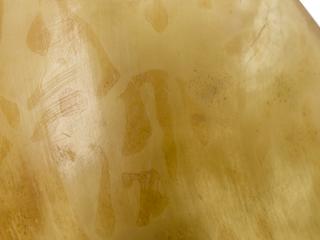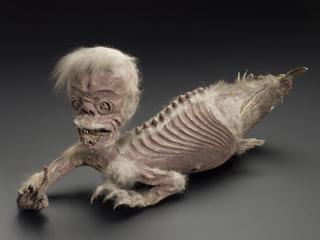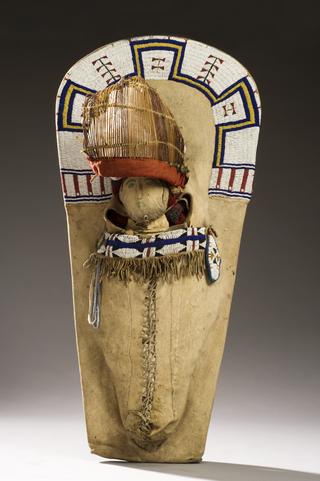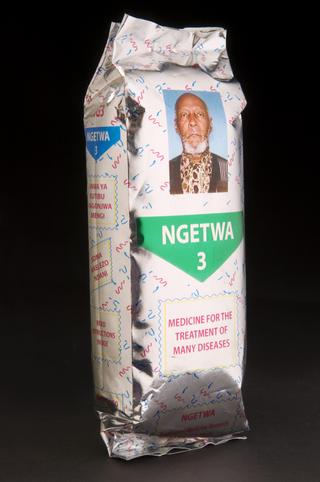
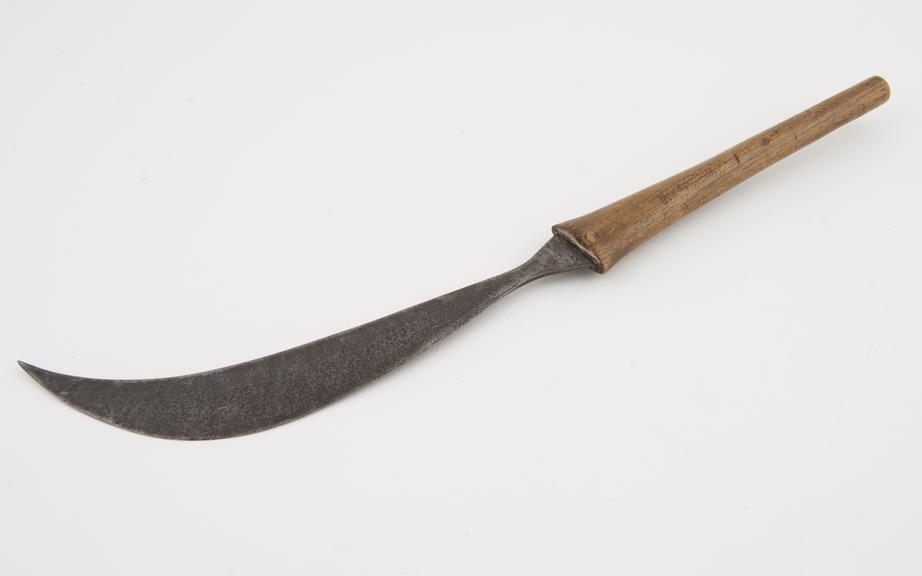
Curved knife, steel, with wooden handle, from Kahura, Uganda, made and used by Bunyoro (Nyoro) people to perform a successful caesarean section in 1879
A caesarean section (also known as a C-section), is the surgical operation performed to deliver one or more babies through a cut made in the mother’s abdomen and uterus. The procedure has long history, with references appearing in ancient Hindu, Egyptian, Greek and Roman folklore, and early accounts described in Chinese, Indian and Persian texts.
Before becoming established in Western medicine in the late 1800s, however, caesarean section was considered a last resort, almost always resulting in the mother’s death from either blood loss or post operative infection.
This knife with curved steel blade was acquired by Robert Felkin (1853–1926), a British medical student on a missionary expedition to the Great Lakes region of Central Africa. In 1879, he witnessed it being used by an indigenous healer in Kahura, Western Uganda, to perform a successful caesarean section.
Felkin documented the process in the Edinburgh Medical Journal, describing how the woman was sedated with banana wine, which was also used to clean her abdomen and the operator’s hands prior to making a vertical cut through the abdomen and uterine wall through which the child and placenta was delivered. Bleeding was controlled via the sparing use of a red-hot iron to cauterise the edges of the incision; it was then closed with seven iron pins and dressed with a paste made of roots and a clean cloth.
Felkin observed the mother and her baby for 11 days after the operation, by which time ‘the wound was entirely healed’. He donated the knife to Sir Henry Wellcome’s Historical Medical Museum in 1913, where it was immediately placed on display.
Felkin’s account showed that indigenous healers in the Bunyoro kingdom, a powerful and isolated African state in Western Uganda, were performing complex surgical procedures before the widespread adoption of infection control measures in Europe and North America. The well-rehearsed use of such techniques indicated a high level of medical expertise, informed by scientific observation, that challenged Western perceptions of African peoples as ‘primitive’ and in need of civilisation; an argument often used to justify imperialist expansion in the continent.
Details
- Category:
- Ethnography and Folk Medicine
- Collection:
- Sir Henry Wellcome's Museum Collection
- Object Number:
- A623612
- Materials:
- steel and handle, wood
- Measurements:
-
overall: 320 mm x 29 mm,
handle: 148 mm
- type:
- surgical knife
- credit:
- Felkin, R.W.

